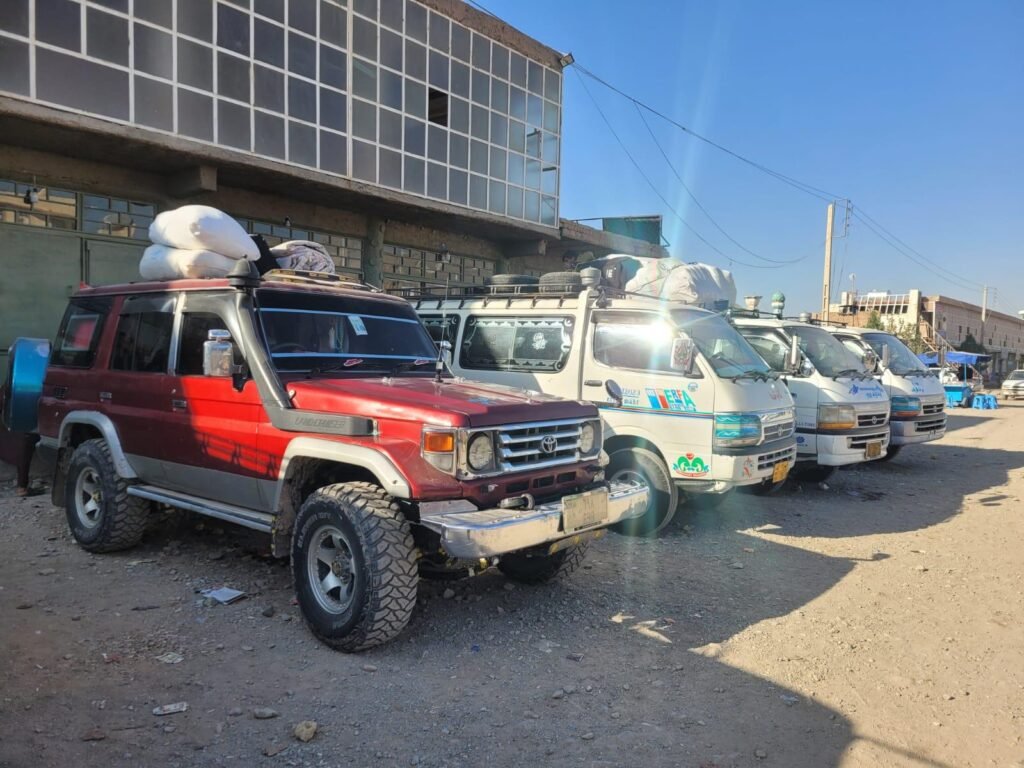
If you’re dreaming of crossing Afghanistan by land one of the most intrepid and revealing journeys is traveling between Mazar-i-Sharif and Herat via Maimana. This route cuts across northern and western Afghanistan, offering everything from smooth highways to dusty rugged river valleys. It’s a route for adventurous souls rewarding you with sights of remote villages, camel-dotted deserts, winding rivers and hospitable locals.
Here’s a summary of what travelers have recently reported on this fascinating overland corridor:
Mazar-i-Sharif to Maimana
The stretch from Mazar-i-Sharif to Maimana is by far the easiest part of this trip.
• Shared taxi (Corolla): Expect to pay around 500–700 AFN per seat, depending on your negotiation and the time of day. Some early morning travelers managed 400 AFN.
• Travel time: About 5 hours, including a lunch and prayer stop.
• Landscape: Mostly desert so keep your money and energy instead of hoping for grand views here.
Tip: Sit in the back if you want more legroom and are prepared to ignore the scenery. The road is very good paved and generally smooth.
Stopover in Maimana
Maimana is the key junction town on this route. Here’s what you should know:
• Rickshaws take you between terminals inside town.
• From here, you’ll transfer to a minibus or Land Cruiser for the journey to Herat.
• Prices:
• Front seats: ~1400 AFN
• Middle rows: ~1200 AFN
• Back rows: ~1100 AFN (avoid these they can be dusty or uncomfortably cold/hot).
Tip: Try to start the next leg in morning. The scenery on this segment villages, rivers, small cliffs is worth seeing in daylight. Also it’s safer given the length and driver fatigue.
Maimana to Herat: The Real Adventure Begins
From Maimana to Herat, brace for adventure.
• Travel time: ~14 hours under good conditions. In some reports, it stretched to 16–20 hours depending on breakdowns, road blocks or weather.
• Road quality:
• First 2 hours are paved, then it’s a rough track following rivers, climbing hills with multiple river crossings. Typical speeds drop to 10–40 km/hr.
• In rainy weather, or if a truck gets stuck on a hill delays can be long.
• Health tip: Bring a scarf or face mask dust is relentless.
🛑 Safety note: Several travelers reported seeing accidents (overturned buses, car crashes). Also watch for drivers nodding off near the end of this grueling drive. Chat with them or encourage short breaks.
Possible Stops Along The Way
Here are some local highlights and practical stops, as compiled from traveler notes:
• Ghormach: Main stop between Bala Murghab & Maimana. Sparse facilities but useful if your car breaks down (common on this stretch).
• Qala-e Naw:
• From Bala Murghab to Qala-e Naw, expect to pay around 700 AFN, ~5 hours.
• Darya Safa Restaurant Hotel: Private rooms start at 550 AFN more for quieter options.
• Herat to Qala-e Naw: About 350 AFN, ~3 hours on mostly paved roads.
• Watch the Sabzak Pass, especially if there’s melting snow it can get dangerous.
• Don’t miss Laman village or Karokh, home to caves and Sufi sites.
Where to Sleep Along the Way
• Sheberghan:
• Qanaat Restaurant Hotel: 800 AFN for a decent room.
• Andkhoy:
• Sarana Baijan: 1000 AFN for a spacious private room, plus great Turkmen palaw & kabab.
• Bala Murghab:
• Ahmadzai Restaurant: Sleeping is free; pay only for food (around 600 AFN for hearty dinner).
• Qala-e Naw:
• As above, Darya Safa is a good local option.
Reverse direction: Herat to Mazar
Doing this from Herat to Mazar-i-Sharif? Similar pattern:
• Go to the “terminal” in Herat (34.361841, 62.303526) early.
• Shared Land Cruisers or minivans depart once full.
• Expect around 21 hours total, split by a vehicle change near Maimana.
• Costs reported: ~2000 AFN for front seat Herat to near Maimana, ~1000 AFN to Mazar.
Final Notes: Who Should Take This Route?
This overland route is only for patient, flexible travelers who are fine with dirt roads, river crossings, mechanical breakdowns and very long days in shared vehicles. It’s rewarding for seeing authentic Afghan countryside but not ideal if you:
• Get carsick easily
• Can’t stand dust or bumpy rides
• Are short on time or rigid with schedules
For the truly adventurous, however, it’s one of Afghanistan’s great overland experiences.
✅ Quick summary:
• Mazar to Maimana: 5 hrs, excellent road, ~500-700 AFN.
• Maimana to Herat: 14+ hrs, rough, dusty, scenic, ~1400 AFN front seat.
• Recommended: Start early, wear a dust mask and keep water handy.
